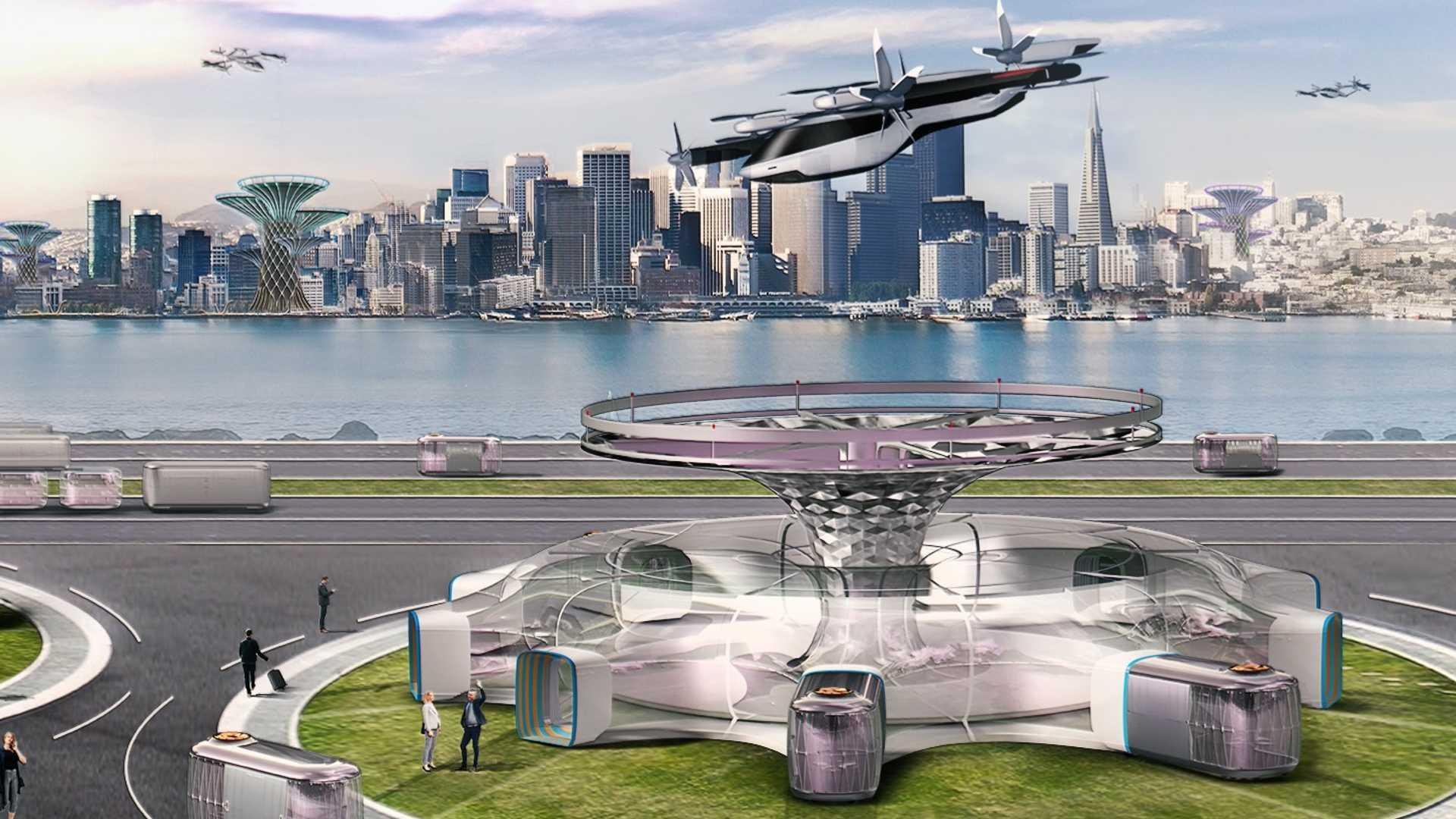韓国、2025年までにUAMの商業運航を目指す | South Korea Sets 2025 Target To Begin Commercial UAM

韓国では、2025年にソウルで都市型エアモビリティ(UAM)の商業サービス開始を計画しており、これによる交通渋滞の解消と、移動時間の最大70%削減を目指している。
政府は韓国都市型航空交通(Korean Urban Air Traffic:K-UAM)ロードマップを発表し、2023年にデモフライトを実施、2025年には2地点を結ぶ商業運航を開始し、2030年には10路線、2035年には100路線に拡大するとしている。
また、韓国の国土交通省は、業界・学術機関・研究機関および規制当局を集めた 「UAM Team Korea」を立ち上げ、都市型航空サービスの実現と産業界の発展を促している。
まず、2022~2024年にかけて、運航環境における試験飛行を含む、大規模な官民合同の実証プロジェクト「K-UAMグランドチャレンジ」を実施する。この際、NASAが実施するナショナルキャンペーンとも協調し、UAMの機体やサービスの統一基準の開発を進める考えだ。
この実証プロジェクトは、韓国国内の通信環境・気象条件・騒音基準などに合致した、UAMの国内基準を設定することを目的としている。また、既存の公共交通安全の枠組みを流用するのではなく、UAM向けの独自システムを構築することも狙いのひとつだ。これは、韓国のUAM業界の成長を促進するために、世界標準に合わせた形のものになるだろう。
ヒュンダイ自動車は、電気推進式垂直離着陸(eVTOL)エアタクシーやマルチモーダルモビリティ(道路・鉄道・航空・水運などの複合交通網)ハブなどで構成されるUAMエコシステムの開発に15億ドルを投資する計画だ。同社は、Uber社の航空ライドシェア構想「Elevate」の機材パートナーとして、5人乗りeVTOL機の開発も進めている。
また、韓国の巨大テック企業・ハンファシステムズ社は韓国航空宇宙研究院と共同で「操縦可能個人用航空機(Optionally Piloted Personal Air Vehicle)」プログラムによるeVTOL技術実証機の開発を進めており、2023年末までの初飛行を目指している。なお、飛行試験はソウル首都圏で実施される予定だ。
6月4日の会議においてロードマップを発表した国土交通省は、韓国におけるUAMマーケットは2040年までに13兆ウォン(1.16兆円)に達し、16万人の雇用を生み出すと予想している。
都市部における30~50kmのフライトは、自動車で1時間かかる道のりを20分に短縮し、最小限の乗り換え時間で鉄道・バス・パーソナルモビリティと接続されると同省は述べた。
エアタクシーの飛行経路や高度はヘリコプターで用いられているものと同様になるが、排気ガスがなく、騒音もヘリコプターの80dBに対し、UAMでは63~65dBであり、「非常に静か」だと同省は説明する。翼と複数のローターを組み合わせた設計は、より安全で効率的なものになると期待されている。
韓国ではすでに、都市部でのドローン運用(宅配サービスを含む)を実現する無人交通管理システム「K-Drone」の開発が進んでいる。UAMの運用を可能にするため、このシステムの運航高度は既存のヘリコプター航路まで拡張された(当初150mだったものが300~600mに拡張)。
サービス開始時点では、仁川国際空港からソウル中心部の汝矣島(にょいとう)までのエアタクシー運賃は40,000ウォン(約3,600円)程度になる見込みだ。国土交通省は「これは通常のタクシーより若干高額だが、マーケットが拡大し、自律飛行が実現すれば、タクシーを下回る20,000ウォン(約1,800円)程度になるだろう」と説明した。
商業運航のスケールアップは、機体・運用・インフラなどの安全基準の整備状況に応じて、2030~2035年頃に実現される予定だ。自律飛行運航の実現時期は、技術の開発および認証に要する時間を考慮すると、2035年以降になると国土交通省では予想している。
同省によると、K-UAMグランドチャレンジのフェイズ0には実証シナリオの設計と、バーティポート(垂直離着陸場)施設の建設が含まれる。フェイズ1(2022~23年)ではソウル近郊における飛行試験を実施。フェイズ2(2024年)では空港周辺と都心部を結ぶデモフライトを実施し、2025年からの商業運航開始に向けた道筋をつける。
また、韓国は高出力・高密度のバッテリーセルや、バッテリーのパッケージング・急速充電・バッテリー管理システム等の研究開発の支援も進める。これらは、当初は小型のeVTOLエアタクシー向けのものだが、2035年以降の運航を目指す、8人乗りで100~400kmの都市間飛行が可能な大型機向けの開発にもつなげる狙いだ。
さらに、低騒音の分散型電気推進に必要なモーターやインバーター、中長距離フライト向けの水素燃料電池、複合素材、UAM向けのセンサー・ナビゲーション・制御システムなどの研究も、国土交通省として支援していく予定だ。
以上は、Graham Warwickが Aviation Week & Space Technologyいた記事です。Aviation Week Intelligence Network (AWIN) のメンバーシップにご登録いただくと、開発プログラムやフリートの情報、会社や連絡先データベースへのアクセスが可能になり、新たなビジネスの発見やマーケット動向を把握することができます。貴社向けにカスタマイズされた製品デモをリクエスト。
South Korea plans to begin commercial urban air mobility (UAM) services in Seoul in 2025 in a bid to tackle traffic congestion and reduce travel times by up to 70%.
The government has released a Korean Urban Air Traffic (K-UAM) Road Map that calls for demonstration flights in 2023 and initial commercial service between two points in 2025, scaling up to 10 routes by 2030 and 100 by 2035.
The Ministry of Land, Infrastructure and Transport (MOLIT) also has launched UAM Team Korea, bringing together industry, academia and research institutes with the policy community to accelerate the realization of urban air services and development of the industry.
Korean plans to begin with the K-UAM Grand Challenge, a large-scale, public-private demonstration project that will run from 2022-24 and involve trial flights in an operational environment. Korea plans to cooperate with NASA’s National Campaign to develop standards for UAM vehicles and services.
The goal of the demonstration project is to develop domestic standards for UAM that are adapted to Korea’s communication environment, weather conditions and social acceptability of noise. Korea’s aim is to develop a new system framework for UAM rather than use the existing transportation safety framework. This will be based on global standards to help foster growth of the Korean UAM industry.
Korean carmaker Hyundai plans to invest $1.5 billion in the development of a UAM ecosystem including electric vertical-takeoff-and-landing (eVTOL) air taxis and multimodal mobility hubs. The company is developing a five-seat eVTOL as a vehicle partner with Uber’s Elevate aerial ridesharing initiative.
Korean technology giant Hanwha Systems is working with the Korea Aerospace Research Institute to develop an eVTOL technology demonstrator that is scheduled to fly by the end of 2023 under the Optionally Piloted Personal Air Vehicle program. Flight trials are planned in metropolitan Seoul.
Unveiling the road map at a conference on June 4, MILTO estimated the UAM market in Korea could reach 13 trillion won ($1.08 billion) in 2040, creating 160,000 jobs.
Flights of 30-50 km (16-27 mi.) in urban areas are expected to reduce trip times from 1 hr. by car to 20 min. by air, and connect with rail, bus and personal transport with minimal transfer time, the ministry said.
Flightpaths and altitudes for air taxis will be similar to those used by helicopters, but with no emissions and “drastically reduced” noise—63-65 dB compared to 80 dB for a helicopter, the ministry said. Designs combining wings and multiple rotors are expected to be safer and more efficient.
Korea already is developing an unmanned traffic management system, K-Drone, to enable urban drone operations, including package delivery. The operational altitude of this system has been extended to current helicopter operating altitudes, from 150 m (330 ft.) to 300-600 m, to include UAM.
Initially a flight from Incheon Airport to Yeouido in downtown Seoul is expected to cost 40,000 won. This is “a little more expensive than the standard taxi, but is expected to be cheaper than the regular taxi at the level of 20,000 won when the market expands and autonomous flight is realized,” MOLIT said.
Scaling up of commercial operations is expected in 2030-35 based on availability of safety standards for aircraft, operations and infrastructure. Autonomous capability is not expected to be available until after 2035, because of the time required to develop and certify the technology, the Ministry said.
According to MOLIT, Phase 0 of the K-UAM Grand Challenge, in 2021, will cover design of the demonstration scenario and construction of the vertiport facilities. Phase 1 (2022-23) will involve flight tests in the outskirts of Seoul. In Phase 2 (2024), demo flights will connect the airport area to the city center, paving the way for the start of commercial operations in 2025.
Korea also plans to support R&D on high-power, high-energy-density battery cells, battery packaging, high-speed charging and battery management systems to support small eVTOL air taxis initially, but later larger aircraft with up to eight seats and 100-400-km range for city-to-city flights beyond 2035.
MOLIT also plans to support research into motors and inverters for low-noise distributed electric propulsion, hydrogen fuel cells for medium and long-range flight, and composite materials as well as sensing, navigation and control systems for UAM.


